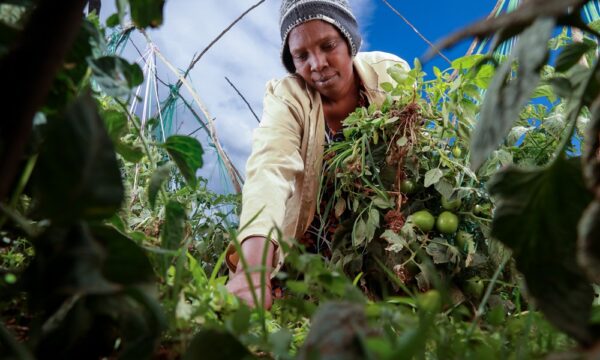As countries around the world consider how to ‘build back better’ after the impacts of Covid-19, tackling climate change and shifting economies towards low-carbon pathways has played a prominent part in many policy discussions. But, to truly build back better, developing resilience to the impacts of climate change is also of paramount importance.
While much attention is rightly given to efforts to reduce greenhouse gas emissions – usually referred to as climate change mitigation – much less attention, and indeed funding, has been given to efforts to cope with climate change impacts – what is usually called climate change adaptation. Yet even in the most optimistic future scenario, a world where we have limited the average global temperature rise to 1.5°c, many areas will still face profound and devastating climate change impacts. Some of the worst affected areas are likely to be some of the poorest and most fragile.
The adaptation gap
The recently published Adaptation Gap Report, by UN Environment, highlights that the current estimate for the cost of adaptation in low-income countries stands at a staggering $70 billion, and could rise to $300 billion by the end of the decade. So far, just 5% of all climate change finance has been directed at adaptation action. This is despite estimates that for every dollar invested in climate adaptation, more than three dollars in losses could be avoided.

Agriculture is the sector most vulnerable to climate change impacts. The majority of smallholder famers, about 1.3 billion people, depend on rain for irrigation, and predictable seasons to cultivate their crops. Even slight changes to the delicate ecological balance can have catastrophic impacts on their ability to grow enough food and other produce to sustain themselves and supply local and global markets. 2020 is estimated to have been the joint warmest on record. Erratic rains, shifting seasons, extreme weather events, and shifting distribution of pests, all driven by climate change, are already making their jobs and livelihoods precarious. Yet by 2018, only 24% of adaptation finance directly supported the agriculture sector, with most of that finance targeted at forestry-based initiatives.
To truly tackle climate change, we not only need to mitigate, but also to adapt.
Climate Adaptation Summit
On 25-26 January, the government of the Netherlands is hosting the Climate Adaptation Summit (CAS21). Through a series of events, it aims to catalyse the international community towards a decade of action on adaptation, and encourage governments and the private sector to pledge sufficient funding for the most climate-vulnerable communities globally. It will also be launching a series of initiatives to support these aims, including a new Investment Blueprint for Climate-Smart Digital Advisory Services in Agriculture. CABI has worked with the Global Commission on Adaptation and other partners to develop the Investment Blueprint, bringing its knowledge and experience in digital advisory services in agriculture. You can follow the launch of the Investment Blueprint, and other CAS21 events, by registering online at cas21.com.

How can smallholder farmers adapt to climate change?
Climate change adaptation in agriculture can include the use of climate-smart technologies such as zaï pits (small planting holes) to retain soil moisture during droughts, nature-based solutions such as agroforestry (integrated crop and tree cover) to provide shelter from high winds and shade during extreme temperatures, and the use of indigenous and specially-bred seeds more resilient to saline soil or drought conditions. Ultimately, the technologies and techniques required to adapt to climate change will vary from area to area and farm to farm, depending on local conditions. So how can we best support smallholder farmers with such diverse needs?
Enabling farmers to access the information they need in order to make informed decisions about how to adapt, and to understand the risks posed by climate change, is central to building ‘adaptive capacity’. Digital tools such as mobile phone apps, text-based weather information, early warning about pests and disease outbreaks, and up-to-date market information can all play a vital role in supporting smallholder farmers to adapt. CABI has pioneered advisory service approaches supported by digital tools, such as PRISE, which uses historic climate data combined with live earth observation data to provide early warning advice to farmers and government agencies of likely pest outbreaks. CABI also pioneered Plantwise, which has supported agricultural extension agents in over 30 countries to diagnose plant health issues and provide tailored agronomic advice, supported by smartphone and tablet apps. During the Covid-19 pandemic, as in-person contact has been severely limited, these digital tools have proven an effective way to maintain support for smallholder farmers facing the dual challenges of climate change and economic recessions.
Investing for action
Climate change is already impacting the productivity and safety of smallholder farmers across Africa, Asia, and Latin America. Investing in adaptation now is vital for ensuring they can continue to supply their families and markets with safe, nutritious, and affordable food. The CAS21 summit is one step towards enabling the level of investment required to meet the global climate change challenges faced by farmers. CABI is also supporting greater investment in smallholder agribusinesses through the CASA programme, with the UK Foreign, Commonwealth, and Development Office (FCDO), developing knowledge products and services to improve confidence in investing in climate-smart agricultural systems and demonstrating areas of emerging good practice. It will take support at all levels – from multilateral organisations to small business lenders – to create a sea-change in investment in climate adaptation in agriculture, and we can’t wait a second longer for it to happen.
Related News & Blogs
Biodiversity loss: How can we reclaim our landscapes from threats to biodiversity?
On 22nd May, we mark the International Day for Biological Diversity. In this article, CABI’s Global Director for Invasive Species Dr Hariet Hinz looks at how we can reclaim our landscapes from threats to biodiversity. Biodiversity loss is proceeding at…
22 May 2025




